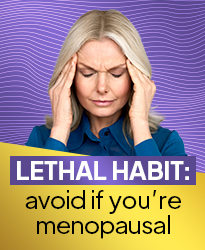Let’s face it: we’ve all been there. One bad day at work, one exasperating email, and suddenly you’re elbow-deep in a bag of chips, swearing it’ll be just one more handful. Spoiler alert: it never is. Overcoming emotional eating isn’t about willpower; it’s about mindfulness—and maybe learning how to eat chips like a civilized human.
Mindfulness, dear reader, isn’t just for yoga studios and those perfectly curated Instagram accounts. It’s the secret weapon you need to stop treating your pantry like a therapy couch.
What Is Emotional Eating Anyway?
Before we dive into the mindfulness mambo, let’s define the beast. Emotional eating is what happens when you turn to food for comfort rather than fuel. Got dumped? Ice cream. Stressed about deadlines? Chocolate. Existential dread? Pizza. (Because, honestly, pizza doesn’t judge.) The problem? These fleeting bites of happiness are like putting a Band-Aid on a leaky dam.
But why do we do it? For starters, food is one of the easiest rewards your brain can access. That rush of sugar? It’s a temporary hug for your nervous system. And let’s not forget the cultural conditioning—how many movies have you seen where someone gets dumped and immediately grabs a tub of ice cream? It’s practically a rite of passage.
Science also has its two cents to throw in. Emotional eating is deeply tied to the brain’s reward system, specifically dopamine. Every time you munch on that chocolate bar, your brain gets a little hit of feel-good chemicals. Over time, this creates a pattern where your brain learns to associate food with comfort. Essentially, your brain starts treating chocolate like a best friend who never lets you down.
Then there’s the physiological side. Stress triggers the release of cortisol, which does more than just make you feel frazzled—it also boosts your appetite for high-calorie foods. Blame evolution. Back in the day, stress meant you were running from a saber-toothed tiger and needed the energy to survive. These days, stress is more likely to come from a passive-aggressive email, but your body hasn’t gotten the memo. Cue the cravings for pizza, chips, and cake.
Let’s not forget the emotional aspect. Food can feel like an escape from uncomfortable emotions. Instead of dealing with sadness, anger, or boredom head-on, it’s easier to distract yourself with a snack. Over time, this habit becomes ingrained, and suddenly, you’re not just eating your feelings—you’re hosting an emotional buffet.
Oh, and the kicker? Emotional eating often leads to guilt. You’re not just stressed about your original problem anymore; now you’re also stressed about the calories you consumed. It’s a vicious cycle—stress leads to eating, which leads to guilt, which leads to more stress. Round and round we go.
The good news? Emotional eating isn’t a life sentence. By understanding the “why” behind it, you can start taking steps to change your relationship with food. And spoiler alert: mindfulness is about to become your new best friend.
Why Overcoming Emotional Eating Is So Hard
First, it’s not your fault. Your brain’s reward system has been hijacked by sugar, salt, and fat—also known as the holy trinity of emotional eating. Add a sprinkle of guilt and a dash of denial, and you’ve got yourself a recipe for disaster. But don’t worry; mindfulness is here to save the day.
Let’s break it down. The reason emotional eating is so hard to overcome is partly biological. Your brain is wired to seek pleasure and avoid pain. Food—especially high-calorie, high-sugar food—offers instant gratification. The moment you take a bite, your brain lights up with a sense of reward. It’s like a tiny party in your head, and who doesn’t love a party?
Then there’s the emotional component. Food becomes a crutch—a way to cope with stress, sadness, or boredom. Unlike other coping mechanisms (looking at you, exercise), eating is easy and immediately satisfying. It doesn’t require effort, and it’s socially acceptable. No one bats an eye if you binge on cookies after a rough day. In fact, movies and media practically encourage it.
Cultural norms play a role, too. Food is everywhere, and it’s often tied to emotions. Celebrations? Bring cake. Bad breakup? Here’s some ice cream. Even commercials paint food as the ultimate emotional fix. It’s no wonder we reach for snacks when the going gets tough.
Let’s not ignore the power of habits. Emotional eating often becomes an automatic response. Stress hits, and before you even realize it, you’re halfway through a bag of chips. Breaking this cycle requires conscious effort, which is easier said than done when you’re already feeling overwhelmed.
And then there’s the guilt. Emotional eating rarely ends with a sense of satisfaction. More often than not, it’s followed by self-criticism and regret. This creates a feedback loop where the guilt from emotional eating triggers more stress, leading to—you guessed it—more emotional eating. It’s a hamster wheel of doom.
Lastly, overcoming emotional eating involves facing your emotions head-on. This can be uncomfortable, to say the least. It’s easier to distract yourself with food than to sit with feelings of sadness, anger, or anxiety. Confronting these emotions takes courage and practice, which is why mindfulness is such a powerful tool in breaking the cycle.
The bottom line? Overcoming emotional eating is hard because it’s not just about food—it’s about emotions, habits, and biology. But with the right strategies, like mindfulness, it’s absolutely possible to reclaim control and build a healthier relationship with food.
Join Our Mailing List
Register now to get our hints and tips newsletter directly to your inbox
The Mindfulness Lowdown
So, what’s the big deal about mindfulness? In a nutshell, it’s about being present in the moment. No, you don’t have to chant “Om” or start wearing flowy pants (unless that’s your thing). Mindfulness is about slowing down, tuning in, and asking yourself, “Am I actually hungry, or do I just want to throw this sandwich at my boss?”
Mindfulness Tips for Overcoming Emotional Eating
1. Pause Before You Munch
Before diving headfirst into that bag of cookies, pause. Take a deep breath. Ask yourself, “Am I hungry or just bored/lonely/stressed?” This tiny moment of reflection can be a game-changer. By taking a moment to pause, you’re giving yourself the opportunity to break the autopilot cycle of emotional eating. Instead of letting your cravings steer the ship, you’re taking the wheel and deciding whether food is really what you need or if it’s time to address the underlying emotion instead.
2. The “What Am I Feeling” Checklist
Mindfulness involves checking in with your emotions. Are you sad? Angry? Frustrated? Identifying the emotion can help you address the root cause instead of slapping a snack-shaped Band-Aid on it. Once you’ve named the feeling, you can ask yourself, “What do I actually need right now?” Maybe it’s a walk, a call with a friend, or even a good cry. Turning inward to assess your emotions takes practice, but it’s one of the most powerful steps in breaking the cycle of emotional eating.
3. Slow and Steady Wins the Race
When you do eat, slow down. No, really. Chew your food. Savor it. Pretend you’re a food critic evaluating the texture of those Cheetos. This simple act of mindfulness can help you eat less and enjoy more. Slowing down also gives your brain time to register fullness, helping you avoid overeating. Engage all your senses—notice the aroma, texture, and taste of your food. By fully immersing yourself in the experience, you’re not only reducing the likelihood of overeating but also rediscovering the joy of eating.
The Role of Mindfulness in Overcoming Emotional Eating
Mindfulness doesn’t just stop you mid-cookie binge; it rewires your brain. Studies have shown that practicing mindfulness can reduce stress, improve self-awareness, and help you form healthier eating habits. Think of it as teaching your brain to choose kale over chaos—metaphorically speaking, of course. We’re not monsters.
Mindfulness Practices to Try Today
Meditation (No Incense Required)
Start with five minutes a day. Focus on your breath, let go of distractions, and let your thoughts pass without judgment. Bonus: it’s way cheaper than therapy.
Journaling (Without Judging Your Handwriting)
Keep a food journal, but not just what you eat. Note how you feel before, during, and after. Patterns will emerge, and you might realize that sushi cravings only hit when you’re avoiding doing laundry.
Gratitude Practices (Because Thankfulness Is Calorie-Free)
Write down three things you’re grateful for every day. Shifting your focus can reduce stress and—you guessed it—curb emotional eating.
Overcoming Emotional Eating Isn’t About Perfection
Let’s get one thing straight: no one’s expecting you to achieve Zen-level eating habits overnight. You will have moments of weakness. You will still eat an entire cake at a birthday party. And that’s okay. The goal isn’t perfection; it’s progress.
The Road to Success
Overcoming emotional eating is like learning to ride a bike. You’ll fall off. You’ll scrape your knees. But with mindfulness as your trusty training wheels, you’ll eventually find balance. And who knows? You might even learn to enjoy food—without the side of guilt.
So, grab a fork, a journal, and maybe a meditation app. It’s time to rewrite your relationship with food, one mindful bite at a time.




